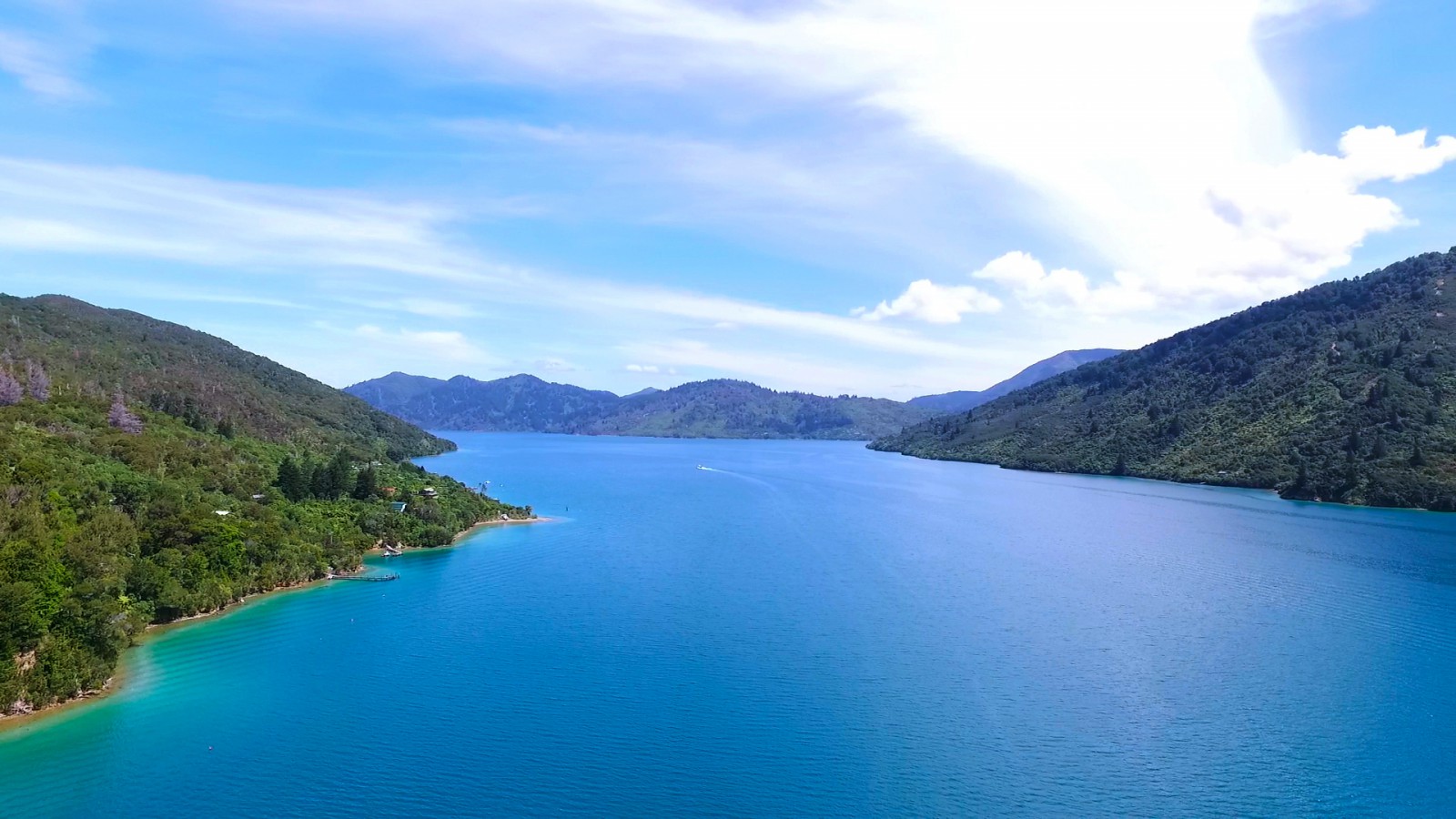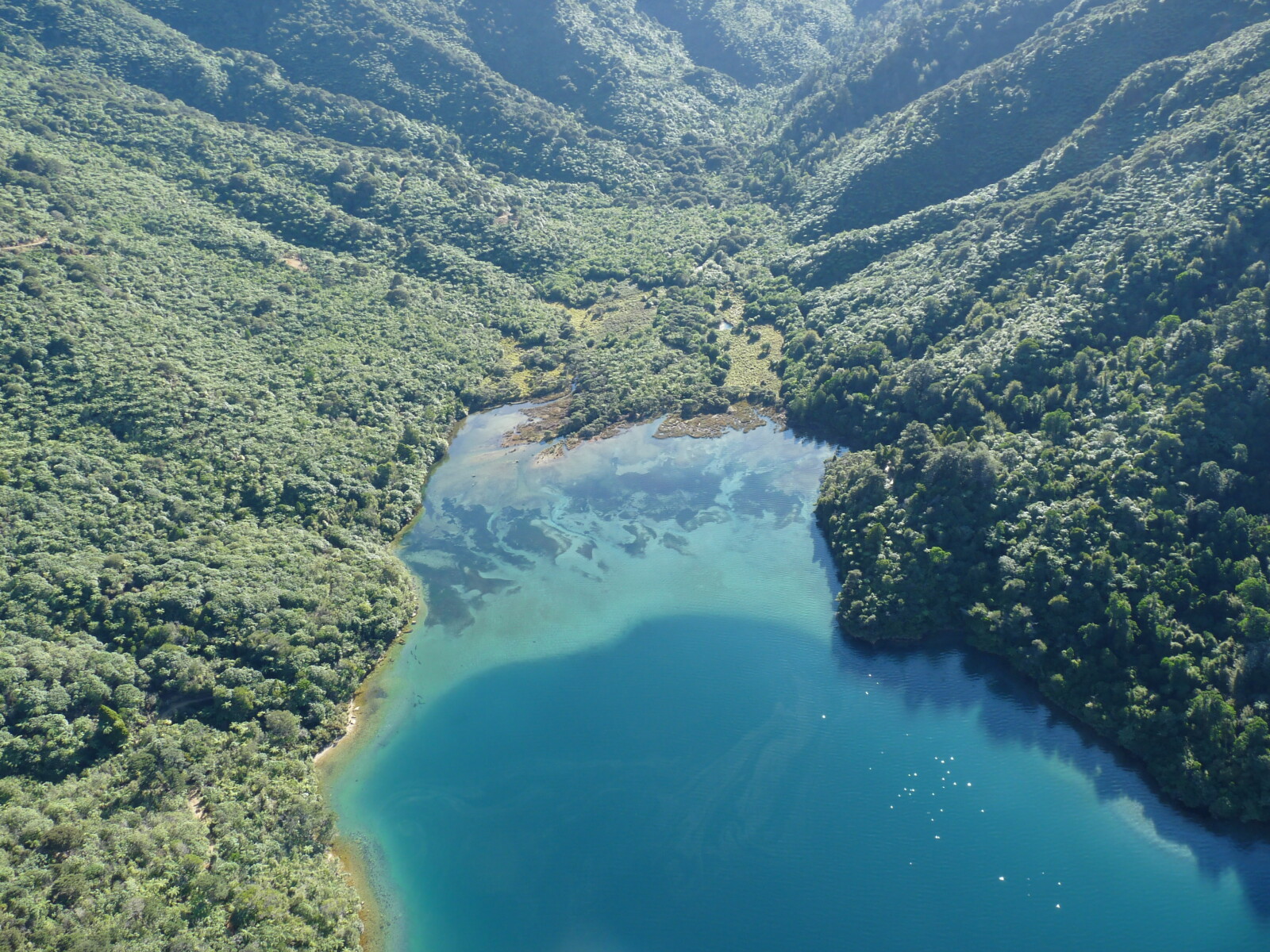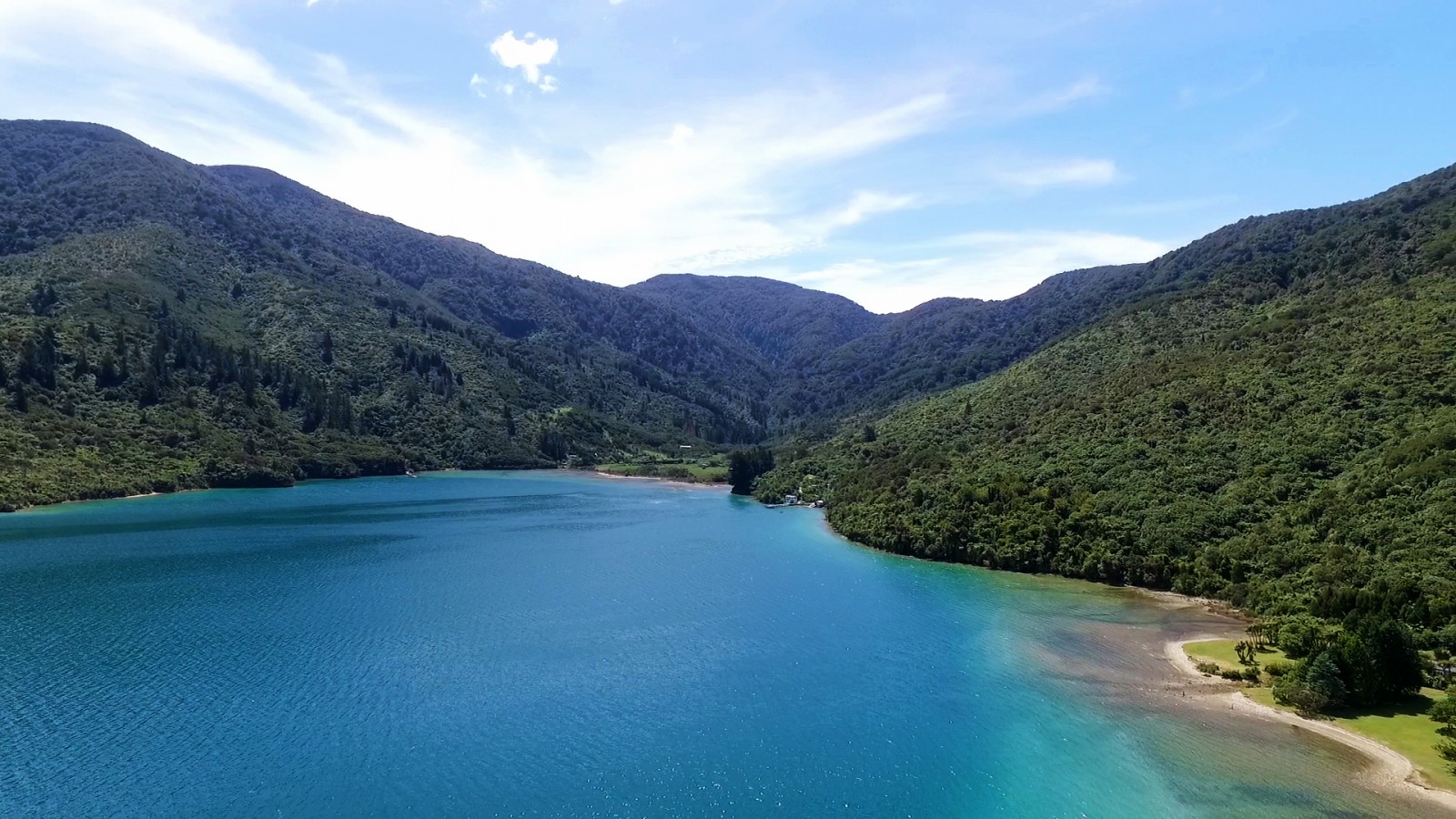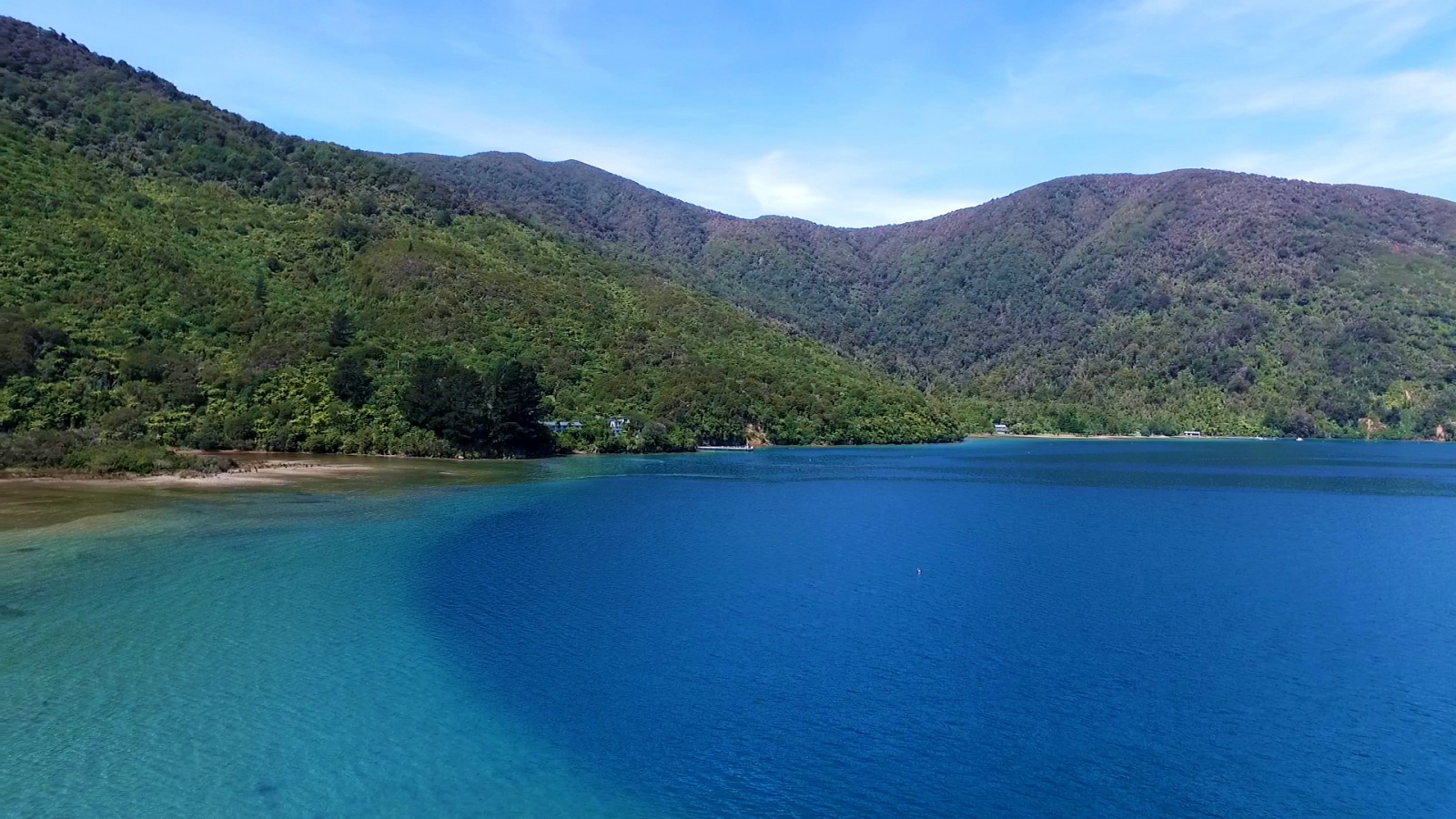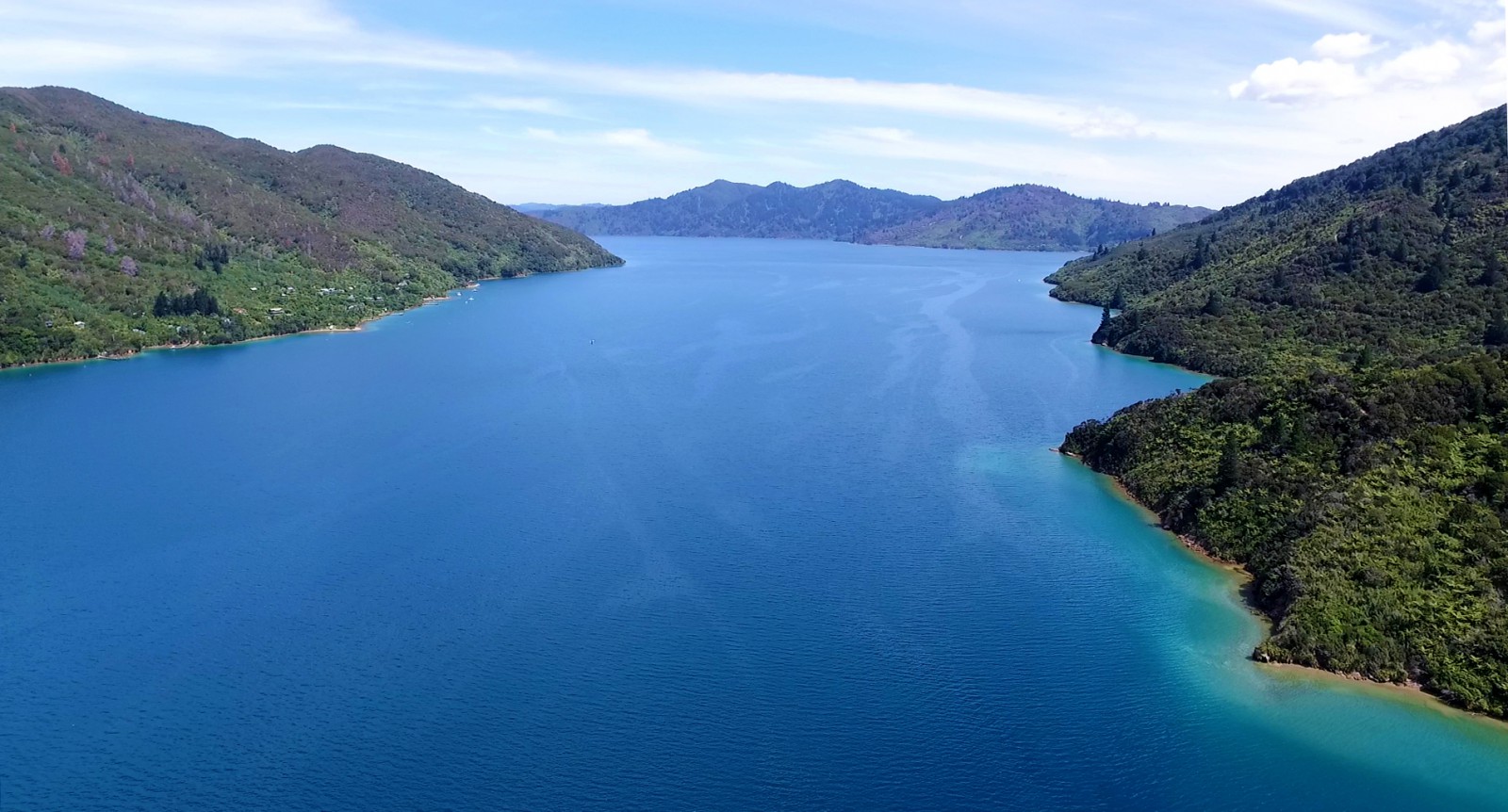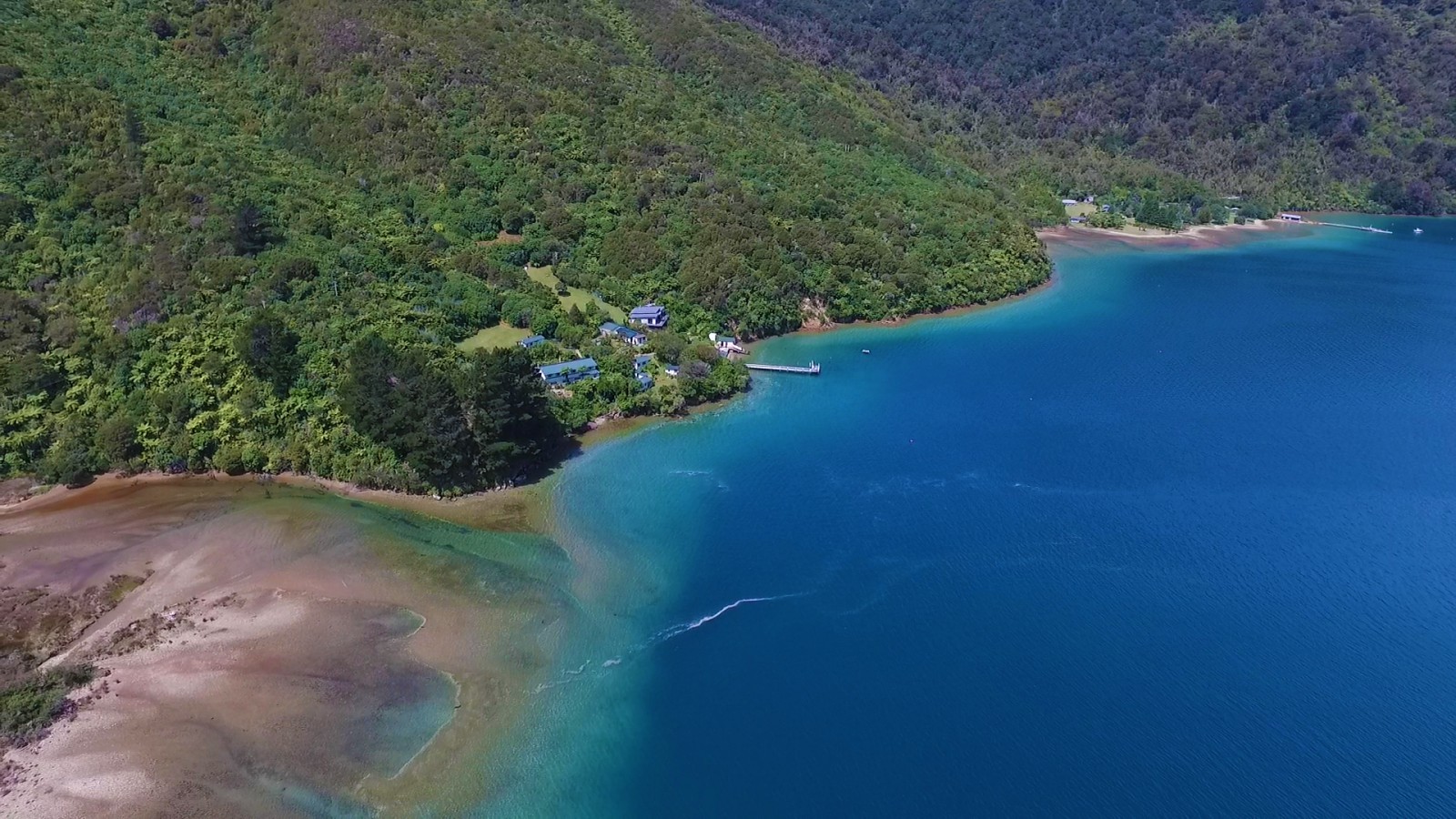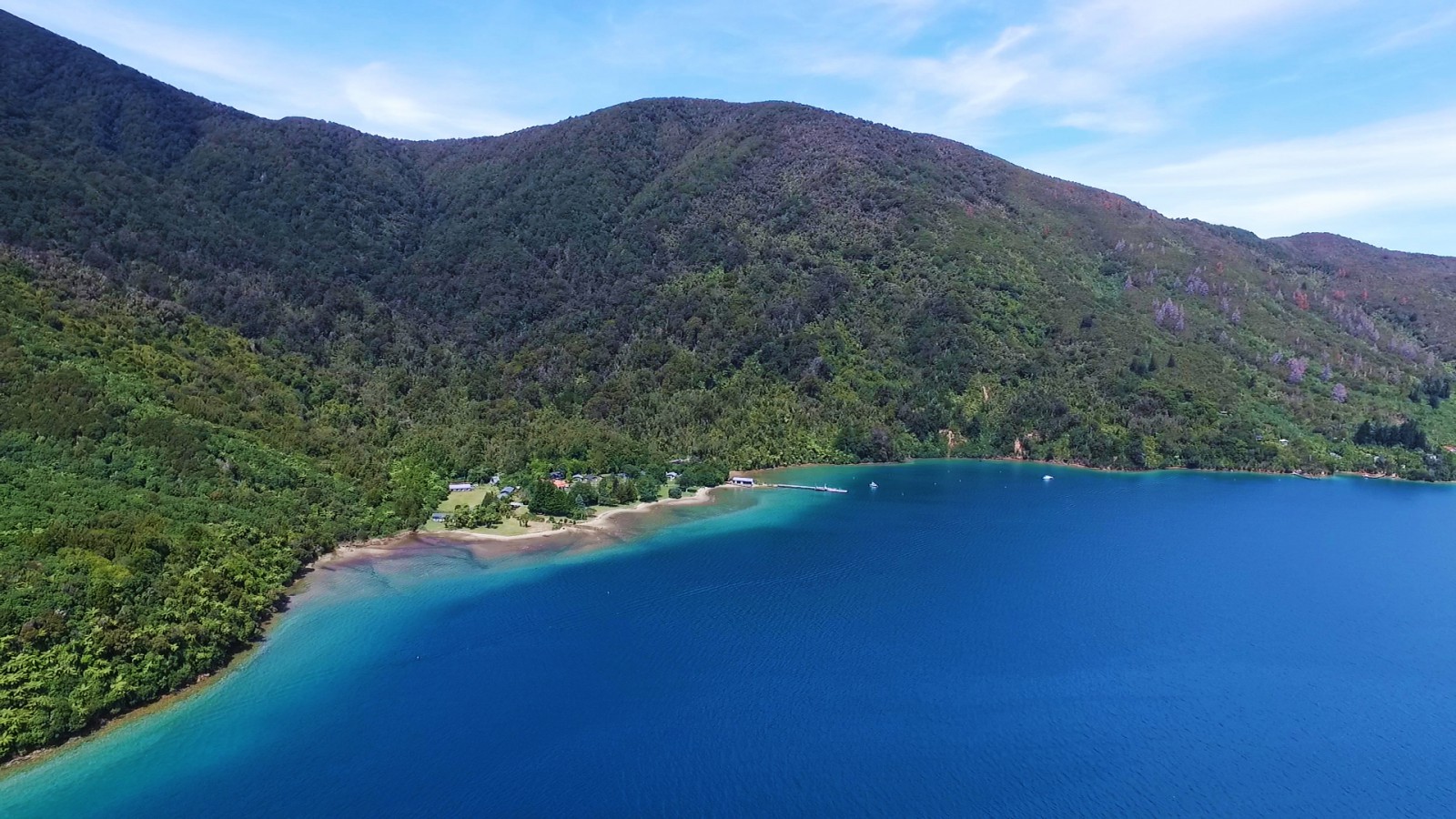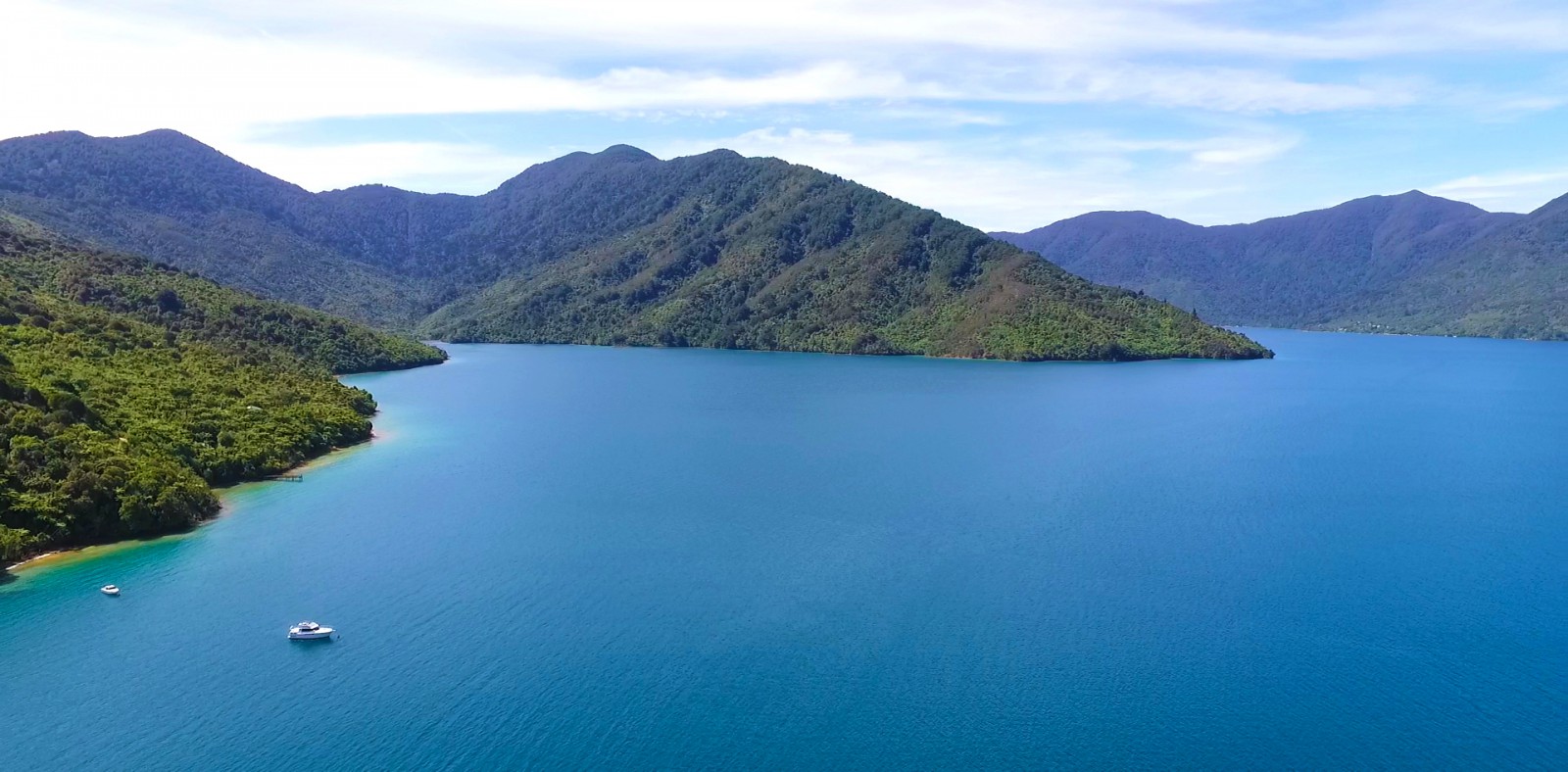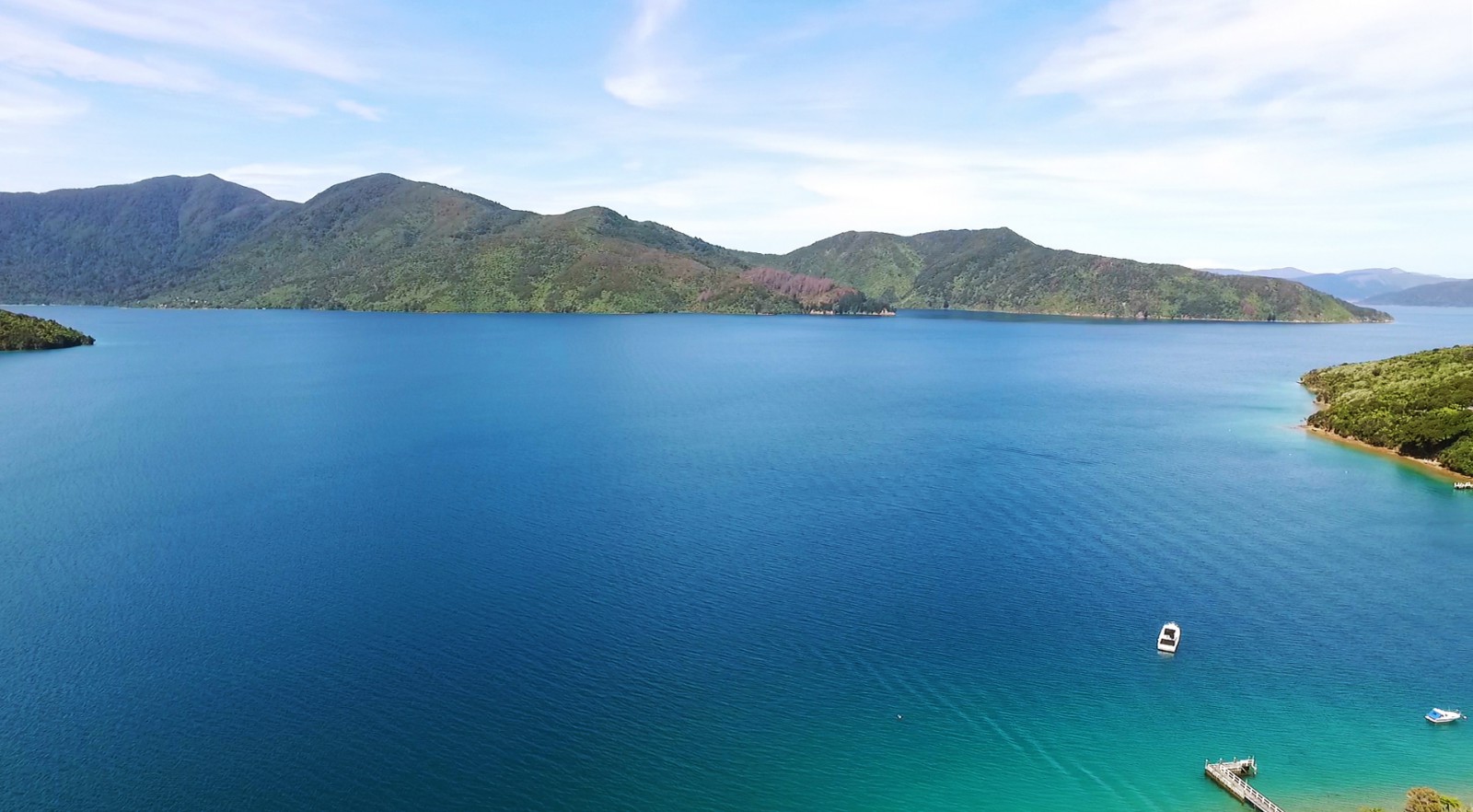The Māori name for this bay is, Puna-rua-whiti, which may mean to cross over in pairs. Alternatively, the name may refer to the fresh water springs in the bay. 1
It was named, West Bay by Captain Cook but renamed, Endeavour Inlet in the early 1840s by Captain Stokes of the HMS Acheron. Several landmarks in the bay are named in recognition of Cook, including Mount Furneaux for Tobias Furneaux, the English navigator who accompanied Cook on his second voyage of the pacific.2
Mount Furneaux is also known as Puhikereru, which means decorated with feathers. The maunga or mountain is considered to be sacred by Māori. It was used as a navigation aid and as a birding area.3
During the late eighteenth century the bay was most likely populated seasonally by Māori groups, probably of Ngāti Apa, Ngāti Kuia and Rangitāne.4 By the 1860s, land that had previously been cultivated by Māori, had been subdivided, partially cleared and sold for farming to European settlers.5
In 1873 rock containing antinomy ore was found in a landslide between Endeavour Inlet and Port Gore. The discoverer may have been John Ashworth who had settled in the inlet. Antimony is a led-grey metal usually found in quartz rock associated with gold. It was used in manufacturing pewter, ammunition and print type and is still used in lead-acid batteries and solder.
John Ashworth and a local syndicate formed the Marlborough Antimony Company Ltd. Mining started in 1873 but within a few years the smelter failed and the mine was closed. Between the years of 1874 and 1950 as many as nine antimony companies were formed and disbanded, and hundreds of tons of ore and smelted mineral were exported.

Antimony mine, Endeavour Inlet. ca 1880s
Ref: 10x8-0452-G. Alexander Turnbull Library, Wellington, New Zealand. /records/22825344
The mine grew rapidly and at one point was one of the major employers in Marlborough. Some of the men working at the mine had been recruited from England for their mining expertise. From 1885 until 1892 the coastal settlement contained 50 men and some families. There were enough children to sustain a school until 1895.

Settlement at Endeavour Inlet part of Settlement at Endeavour Inlet. 1878-1894
Ref: 10x8-0834. Alexander Turnbull Library, Wellington, New Zealand. /records/22682780
The mining operation included two centrifugal pulverisers, 24 smelting furnaces and a tramline sending the antimony 1500 feet down the valley to a jetty on the waterfront. Steamers would berth there, and were loaded with antimony for export to England.6
Today, the remaining visible mine features include the remains of the treatment works and smelter and several drives (mine tunnels, shafts or levels) that can be seen from the Queen Charlotte Track, including the number one drive in the cut on the saddle between Endeavour Inlet and Port Gore.7
Endeavour Inlet is a popular summer recreation area, boasting resorts at Punga Cove in Camp Bay and Furneaux Lodge.
1. W. H. Sherwood Roberts, “Maori Nomenclature: Maori Names of Places in the Provincial District of Marlborough,” Marlborough Express, Volume XXXVII, Issue 210, 5 September 1903, Supplement, accessed January 9, 2018, http://paperspast.natlib.govt.nz/newspapers/MEX19030905.2.45.23
2. H. A. H. Insull, Marlborough Place Names (Wellington, A. H. & A. W. Reed, 1952) p40.
3. Marlborough District Council, Nelson City Council and Tasman District Council, “Te Tau Ihu Statutory Acknowledgements 2014”, accessed July 18, 2018, http://www.nelson.govt.nz/assets/Environment/Downloads/TeTauIhu-StatutoryAcknowledgements.pdf .
4. Loreen Brehaut, “Endeavour Inlet and the Antimony Mine”, the Prow, accessed December 12, 2017, http://www.theprow.org.nz/yourstory/endeavour-inlet-and-the-antimony-mine/#.Wi8TL0qWbIU
5. “Page 2 advertisements column”, Nelson Examiner and New Zealand Chronicle, Vol XXIII, Issue 101, 23 August 1863, accessed December 12, 2017 https://paperspast.natlib.govt.nz/newspapers/NENZC18640823.2.9.1
6. Tony Nightingale, Endeavour Inlet Antimony Mine (Science and Research Unit, Department of Conservation, 2002) accessed December 12, 2017, http://www.doc.govt.nz/documents/science-and-technical/antimony.pdf
7. Brehaut, “Endeavour Inlet and the Antimony Mine.”

